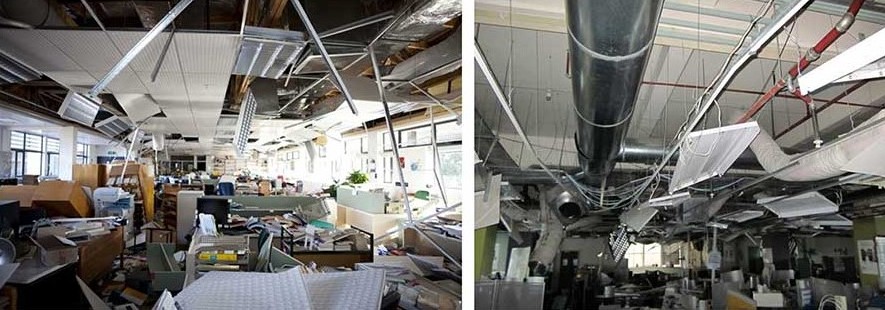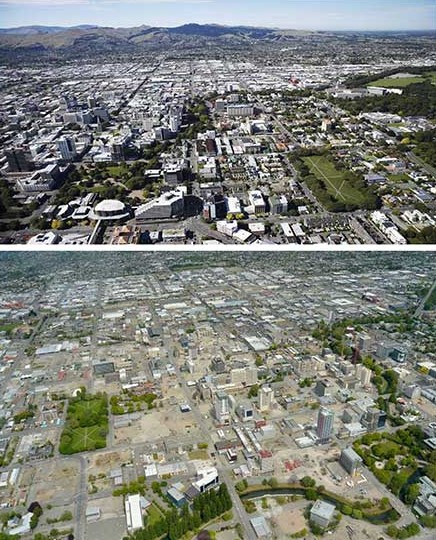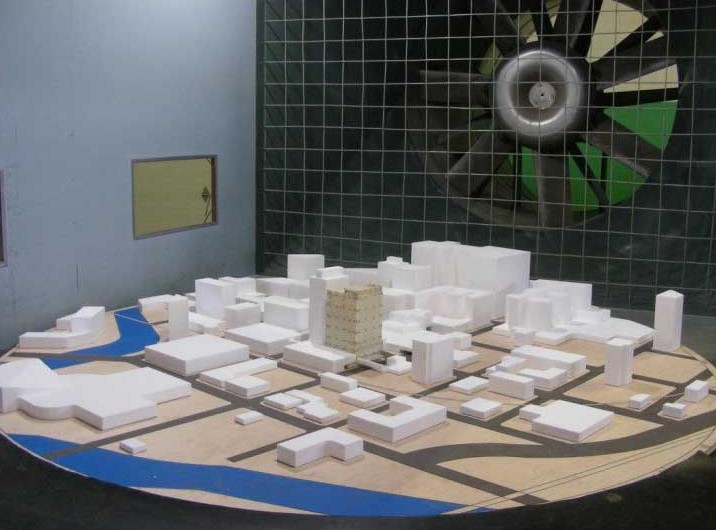Building codes exist for a very simple reason; to ensure the building in question remains upright, structurally sound, and keeps its occupants protected from the elements. They exist to provide “life-safe” environments. Codes are prescriptive and mandate specific design practices to meet baseline requirements. What codes don’t account for; however, are the desired performance goals of the building’s owner. Performance-based design (PBD), as opposed to prescriptive design, enables building owners and operators to customize the building design based on long-term goals, including occupant comfort, operating costs, structural/non-structural system performance, and more.
PBD can be thought of as a Hippocratic oath for the engineering and design profession: A building shall cause no harm. In fairness, adopting PBD doesn’t disoblige one from adhering to certain code requirements. It does, however, provide clear paths to eliminating some of the more conservative and retrograde requirements where unnecessary, providing opportunities to implement innovative design solutions — structural or otherwise — that are not yet defined in the code.
Also key to this discussion is the practice of resiliency, broadly defined as the ability to prepare and plan for, absorb, recover from, and adapt to adverse events. PBD both reinforces and improves upon resiliency practices by controlling the potential damage a building will experience from external factors. When executed properly, PBD accounts for all structural and non-structural building elements, including mechanical, electrical, and plumbing (MEP) systems; insulation; and envelope, among others, and factors in how each of these contributes to building performance. Prescriptive design focuses on preventing structural collapse but doesn’t specify continuity of functionality and maintenance needs of nonstructural components. Today’s building industry mainly follows prescriptive design. Consequently, the majority of buildings are designed to remain structurally life-safe after design-basis events, only with the intent that the structure will not collapse in case of an event that occurs beyond the design basis. Even if structural damage is prevented, it’s very likely these buildings will need to be unoccupied for a long time due to the costly repairs of and replacements required for the nonstructural components.

A Question of Place
PBD is about specifying place- and climate-based engineering solutions. It’s also about developing a thorough understanding of risk assessments. Wherever there is heightened risk of seismic events, storms and high winds, flooding, and wildfire, PBD has application and relevance within each context. Better structures coupled with better risk assessment provide pathways for better building performance.
Of course, PBD does not comprise one set of engineering standards nor does it represent a singular design philosophy. It does not intend to replace building codes but rather supplement them. It’s a method for incorporating resiliency into common design practices and designing based on stakeholders’ stated objectives as opposed to vague preferences. It’s a pathway to extending the life cycle of the building.
For the moment, a performance-based approach is an alternate method of compliance per the building code and is not mandatory in any region in the U.S. To be fair, following code requirements suffices for many low and mid-rise residential and commercial buildings, provided they are in areas with lower risk. This isn’t to say that some degree of PBD couldn’t benefit these buildings in such places. Indeed, the tide is shifting.

A Holistic Approach
While PBD is meant to focus on performance goals and place-based solutions, it’s also largely a response to the changing conditions of a world increasingly impacted by climate change.
No one knows exactly when and where the next climate event will strike; only that it will. Ensuring the safety, security, and proper risk management for our built environment and building occupants goes well beyond what prescriptive building codes can accomplish. Further, adopting a PBD practice not only ensures climate resiliency for the building but also social and economic resiliency. Recent record-breaking snowstorms in California, heat waves in Western Europe, and earthquakes across the globe — to name a few milestones — place heightened demands on the built environment to perform better under increasingly unpredictable circumstances and external stresses. That said, PBD need not only apply to vulnerable buildings lying in high-risk parts of the world.
This practice is currently more common in the seismic design of high-rise buildings in the Western U.S. but should be universally adopted as protocol for all mission-critical buildings, public infrastructure, and structures of historical importance. This extensive (and growing) list includes, but is not limited to, hospitals and emergency centers; libraries, schools, city halls, and community shelters; water towers; and wind turbines. PBD should be standard for new builds and retrofits alike. As it concerns the latter, owners and operators of existing buildings should heed the benefits of PBD when exploring possible upgrades.
Just as PBD is predicated on good stewardship, so is the choice to retrofit, adapt, and/or upgrade the existing building stock. And when it comes to diagnosing existing buildings en route to performing assessments and retrofits, use of the simplified analysis methodologies, when allowed by the prescriptive code-based approach, is the equivalent of an X-ray; whereas use of the state-of-the-art analysis methodologies as part of PBD is like performing an MRI.

The Net Benefits of PBD
Repair costs of non-structural components are typically higher than those of structural components following an earthquake. Yet, building code provisions don’t implement evaluation of structural and nonstructural component performance as part of prescriptive code-based design. The 2010 Canterbury and the 2011 Christchurch Earthquakes in New Zealand demonstrated the significance of design beyond the minimum code requirements to achieve resiliency in the built environment. PBD encourages improved resiliency and maximizes value by reducing downtime and repair costs associated with future hazards, whereas prescriptive design will only meet baseline value. Maintaining a high level of performance under stress while conserving energy resources should be the goal for every building.
PBD also encourages innovation by allowing designers to evaluate alternative building systems that are not covered by building codes. Exceptions to certain prescribed code provisions can be substantiated by PBD, resulting in potential cost savings in certain structures.
PBD empowers owners and operators to specify building performance objectives as an investment strategy as well. Laying down specific benchmarks gives stakeholders a clearer sense of budgets; cost breakdowns; and, most importantly, where dollars are being spent. PBD also equips stakeholders with the right questions to ask upfront, getting them to a point where they at least know what they don’t know.
Carefully planned performance objectives will often result in accurate performance projections. This practice is the ideal pathway to future-proofing any building and creating something that exceeds baseline. PBD provides people with a capacity to achieve worthwhile goals and engage in the types of innovations the building industry so desperately needs.






